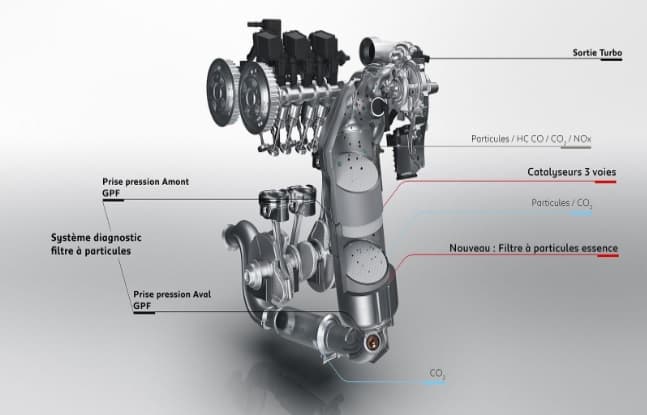Starting from September 2018 the Euro 6c European emission standards, which reduces by ten times the emissions of particulates allowed for petrol cars and which was already in force for the newly approved models, is extended to all newly registered cars. This brings on the scene the particulate filter for petrol engines.
Why a particulate filter on petrol cars?
The particulate filter for petrol engines is called GPF (Gasoline Particulate Filter), while the one mounted on diesel units is internationally identified as DPF (Diesel Particulate Filter) or FAP (Filtre à particules).
Direct injection system on petrol engines is responsible for the change, in fact while on the one hand it provides more power with less fuel consumption, on the other it pollutes more. With direct injection the compression of fuel in the combustion chambers takes place at very high pressures and this affects the amount of particulate released into the environment (a quantity 1000 times higher than diesel engines according to the independent European association Transport & Environment).
The installation of a particulate filter is therefore the best solution to meet the increasingly stringent anti-pollution regulations, so that many manufacturers are taking this path, overall the PSA group (Peugeot, Citroen, DS and Opel) that since January 2018 has updated the 1.2 and 4-cylinder turbo 3-cylinder 1.6 engines, equipping them with the GPF.
How does GPF,Gasoline Particulate Filter, work?
PSA group explained the functioning of the Gasoline Particulate Filter saying that, unlike traditional diesel particulate filters, the GPF has the advantage of not clogging: the filter cleans itself continuously, and not only when it is clogged.
This result was achieved by changing the engine, the catalyst and the system that controls the air/gas mixture but above all working on the materials: unlike the diesel ceramic filter, made of silicon carbide, the GPF adopts cordierite, a mineral resistant to the heat that reacting with the particulate, triggers an internal cleaning of the filter, which is continuous and self-regulated.
Apart from the fact that cordierite is currently also used for Dpf, we must remember that according to the predictions of the manufacturers, the DPF and FAP diesel particulate filters promised an effective self-regeneration system, but the reality of the facts as everyone knows is very different: the majority of drivers do not meet the speed and mileage parameters necessary for self-regeneration to start. They are therefore forced to replace the particulate filter or rely on our cleaning service with Flash Cleaner Machine.
We’ll see what happens with the GPFs but let’s remember that every time a fuel burns, it produces ashes and the ashes will always have to be removed.
The first car equipped with the GPF is the Peugeot 308 , which makes use of the direct fuel injection like any car for which the GPF is required, and which according to the PSA will be able to cut particulate emissions by up to 75%.



